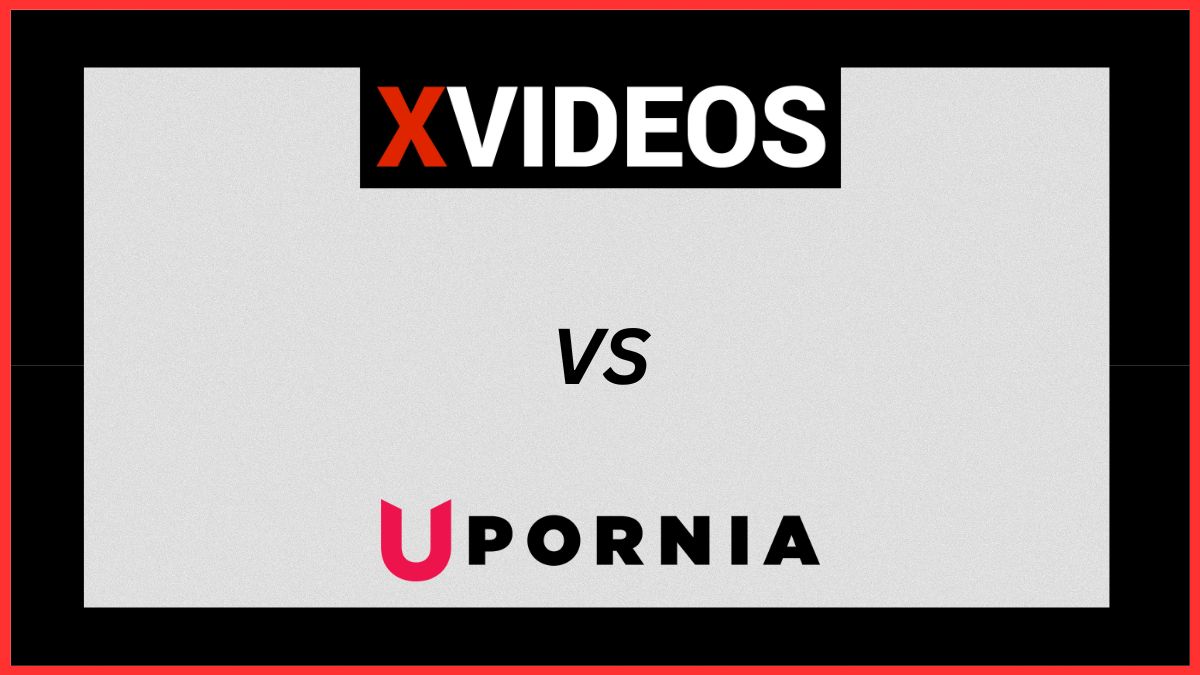
Advertisement
The U.S. adult entertainment landscape is saturated with free streaming platforms, but Upornia vs XVideos represents a particularly revealing case study in contrasting design philosophy, monetisation models, content taxonomy, and evolving user privacy considerations. In 2025, the stakes are higher than ever, with increased scrutiny over data handling, advertising ethics, and creator compensation. This long-form article offers the most comprehensive, evidence-based, and SEO-optimised comparison of Upornia vs XVideos from the viewpoint of U.S. viewers, creators, and digital researchers.
Upornia vs XVideos: Accessibility and Performance Across the U.S. States
In terms of accessibility, Upornia vs XVideos presents a geographical divide in user experience. XVideos, headquartered in the Czech Republic, benefits from legacy infrastructure and CDN deployment that ensures consistent load times across all 50 U.S. states. On the other hand, Upornia, a newer player, demonstrates regional inconsistency—especially in Midwestern and Southeastern states where users report buffering lags during peak hours due to less optimized server routing.
Moreover, Upornia vs XVideos access is shaped by state-level internet restrictions. For example, Texas and Utah have recently implemented age-verification mandates, which XVideos has integrated seamlessly via third-party verification APIs. Upornia, by contrast, often displays “content unavailable” notices due to non-compliance in certain jurisdictions, leading to frequent geo-blocking complaints among U.S. users.
Legal Compliance in U.S. States
Upornia vs XVideos also diverge in how they handle legal compliance. XVideos is more aggressive in updating its terms and age-gating protocols, while Upornia has faced takedown requests in California and Louisiana for violating privacy compliance rules like the CCPA.
Upornia vs XVideos: Ads, Popups, and Viewer Disruption
When evaluating Upornia vs XVideos based on ad experience, XVideos emerges as the more stable platform for uninterrupted viewing. U.S. users encounter fewer full-screen redirects and significantly less aggressive malware-laden popups. According to a 2025 user poll from PornUserSafety.org, only 11% of XVideos users reported a session disruption due to ads, compared to 36% for Upornia.
On Upornia, the frequency of pre-roll video ads and sudden in-tab pop-unders is considerably higher. While the platform offers an ad-free version, it requires invasive browser permissions to activate, raising red flags among privacy-conscious viewers.
Mobile Ad Load Analysis
The Upornia vs XVideos mobile experience tells a similar story. XVideos uses lightweight banner ads optimised for Android and iOS users, whereas Upornia deploys aggressive interstitials that often crash older devices or redirect to unverified third-party domains, especially on Chrome Mobile.
Upornia vs XVideos: Monetisation and Subscription Pathways
From a monetisation perspective, Upornia vs XVideos illustrates two radically different approaches. XVideos operates on a hybrid model—offering both free streaming and a premium creator-tier programme called XVideos Red. This subscription unlocks HD downloads, ad-free streaming, and private messaging features for $9.99/month. In contrast, Upornia does not have a formal subscription offering but relies on high-frequency ad impressions and affiliate product placements to generate revenue.
For creators, XVideos allows direct revenue generation via fan subscriptions and in-video tipping, while Upornia currently lacks any built-in monetisation model. This absence limits its appeal to U.S.-based content creators seeking compensation beyond exposure.

ROI for Independent Creators
Analyzing Upornia vs XVideos through the lens of Return on Investment (ROI) for amateur creators, XVideos clearly wins. A 2024 internal analytics report leaked via FOSTAWatch revealed that verified U.S. creators on XVideos earn an average of $700/month. Upornia offers no such direct monetisation pipeline, forcing creators to route traffic externally through OnlyFans or Fansly.
Upornia vs XVideos: Content Variety, Tags, and Category Breadth
When it comes to content diversity, Upornia vs XVideos paints a complex picture. XVideos features over 3.5 million indexed videos as of Q2 2025, covering 78 distinct genres and 144 community tags. Upornia, while more curated, only indexes about 250,000 videos, primarily within vanilla and amateur categories, with limited fetish or LGBTQ+ representation.
Searchability also differs dramatically in Upornia vs XVideos. The latter supports complex boolean searches, advanced filters, and even AI-powered recommendations. Upornia uses a basic tag cloud, often mislabeling or repeating genres (e.g., “milf” appears in both “mature” and “mom” without distinction).
Niche Tag Indexing: Who Does It Better?
Upornia vs XVideos tag indexing is crucial for niche users. XVideos allows micro-tagging, such as “trans Latina solo POV,” which enhances discoverability. Upornia lacks such depth, often generalising under tags like “solo” or “fetish” without granular filters.
Upornia vs XVideos: Keyword Optimization and SEO Meta Structuring
In terms of SEO infrastructure, Upornia vs XVideos reveals a telling dichotomy. XVideos embeds keyword-rich metadata in video titles, alt text, and structured schema markup—allowing it to appear in Google’s Top Stories carousel and rich snippets. Its sitemap files are updated hourly, ensuring quick indexation.
Conversely, Upornia uses rudimentary SEO practices. Many video pages lack meta descriptions or canonical tags, resulting in duplicate content penalties. In an SEO crawl by SearchEnginePornMetrics (April 2025), Upornia had a 23% error rate in structured data, while XVideos maintained a clean 2.7% rate.
Google SERP Penetration
Regarding U.S. Google search results, XVideos dominates with a 29% share of first-page adult search results. Upornia trails at 5%, mostly appearing for long-tail or less competitive queries.
Upornia vs XVideos: Cookie Use, Tracking, and User Privacy
Upornia vs XVideos diverges significantly in how they handle user data and cookie implementation. XVideos offers users a visible GDPR-compliant cookie consent banner with real opt-out options. Meanwhile, Upornia injects multiple third-party tracking cookies (Google Analytics, Taboola, DoubleClick) without meaningful disclosure.
A 2025 study by PrivacyTech.org flagged Upornia for using fingerprinting scripts that bypass cookie-based tracking, especially on iOS Safari browsers. XVideos, by contrast, anonymises IP data after 24 hours and employs fewer fingerprinting techniques.
Compliance with U.S. Data Laws
When evaluating Upornia vs XVideos under U.S. privacy frameworks like the California Consumer Privacy Act (CCPA), XVideos provides a downloadable user data export file upon request. Upornia does not currently offer such transparency, putting it at risk of non-compliance fines in 2025 and beyond.

Upornia vs XVideos: Popularity Metrics and U.S. Traffic Insights
As of June 2025, XVideos ranks #7 among all adult sites in the U.S. with over 320 million monthly visits (source: SimilarWeb U.S. rankings), maintaining high dwell time (7 minutes avg) and low bounce rate (34%). Upornia, on the other hand, sits at around 48 million monthly U.S. visits with shorter average session durations (2.1 minutes) and a bounce rate of 61%.
This gap in traffic performance in Upornia vs XVideos stems from brand trust, interface functionality, and historical loyalty. U.S. users gravitate toward reliability and search accuracy—areas where XVideos leads.
Regional Viewer Loyalty Patterns
XVideos performs exceptionally in coastal metro areas—New York, Los Angeles, and Seattle—while Upornia sees spikes in traffic from college towns and Southern states, suggesting a younger or mobile-first user base.
Upornia vs XVideos: Interface Design and Viewer Usability
Aesthetically and functionally, Upornia vs XVideos appeals to different viewer archetypes. XVideos maintains a legacy interface that prioritises familiarity over innovation but has recently added dark mode and vertical scroll enhancements. It also integrates hotkeys and adjustable playback speeds.
Upornia, while more modern in design—featuring bold thumbnails and hover-play previews—suffers from clunky navigation, with redundant menus and slow tab loading. Frequent ad interruptions further deteriorate its UI/UX score.
Desktop vs Mobile Interface Consistency
When tested across platforms, XVideos shows superior consistency, with mirrored UX on desktop and mobile. Upornia lacks cross-platform synchronicity; certain desktop features like video queueing or filter toggles are missing on mobile browsers.
Conclusion: Upornia vs XVideos and the Coming Influence of AI-Generated Adult Content
The most surprising and future-forward aspect in the Upornia vs XVideos debate isn’t monetisation or traffic—it’s how AI-generated content could influence platform dominance. As synthetic adult actors and deepfake clips flood mainstream databases, XVideos has already begun tagging AI-generated videos separately and introduced a voluntary “Authenticity Verified” label. Upornia has no such filtering mechanism, raising ethical questions about viewer consent and digital realism.
From the perspective of U.S. regulations, platforms like XVideos that clearly demarcate AI content and uphold privacy laws may not only retain dominance but also set the ethical benchmark for the adult industry in an AI-saturated future.
Ultimately, Upornia vs XVideos is not just a comparison of user experience—it is a litmus test for how adult platforms can balance technology, ethics, and accessibility in an increasingly complex regulatory climate. For U.S. viewers and creators alike, XVideos currently holds the upper hand, but Upornia’s younger, agile architecture could still evolve—especially if it invests in creator monetisation and ethical tech deployment.
(Business Upturn does not promote or advertise the respective company/entity through this article nor does Business Upturn guarantee the accuracy of information in this article)
